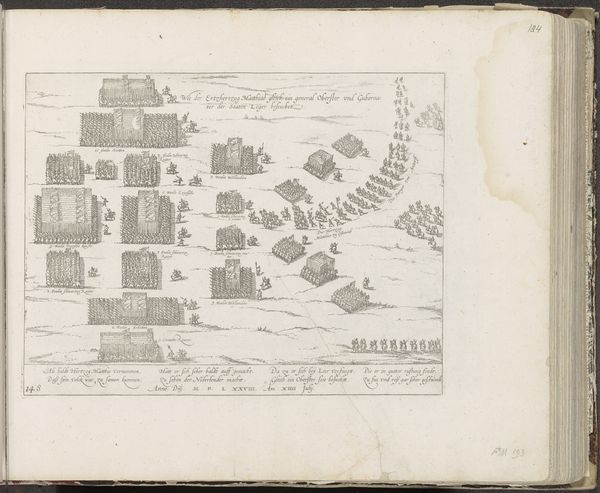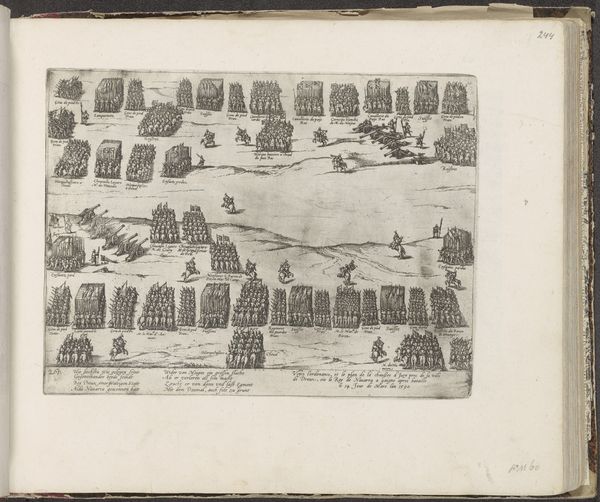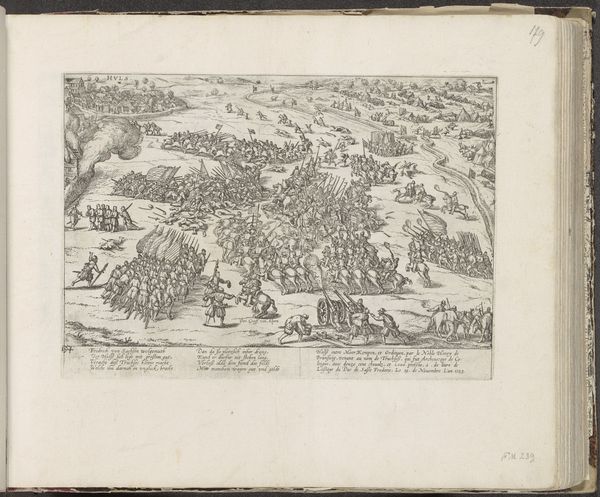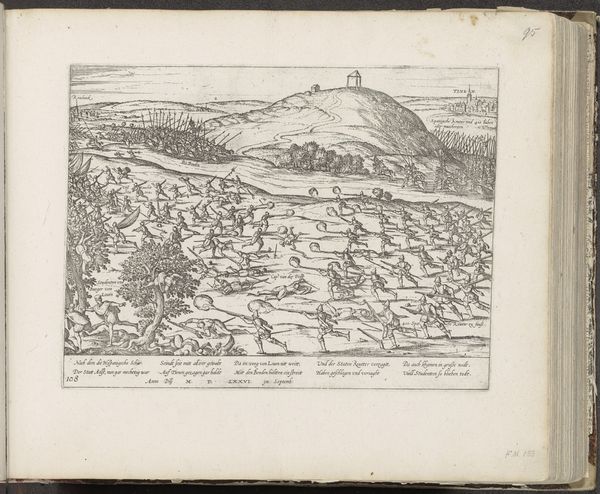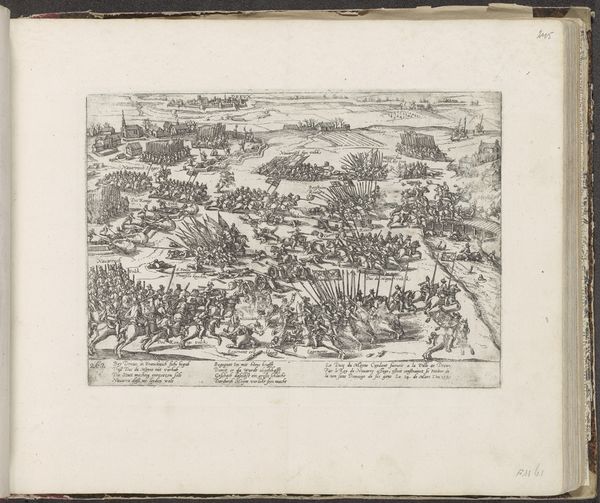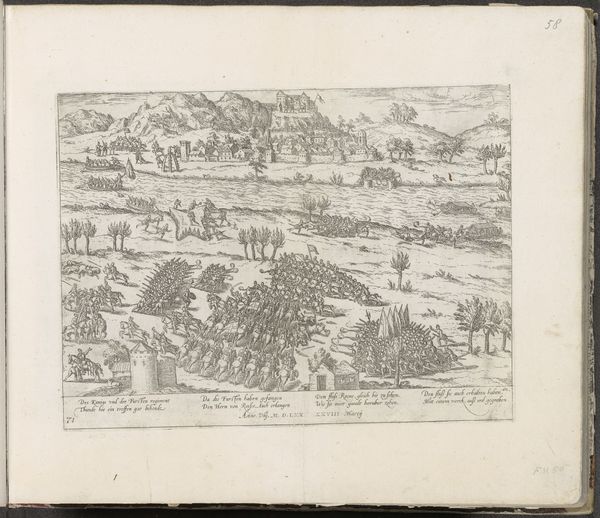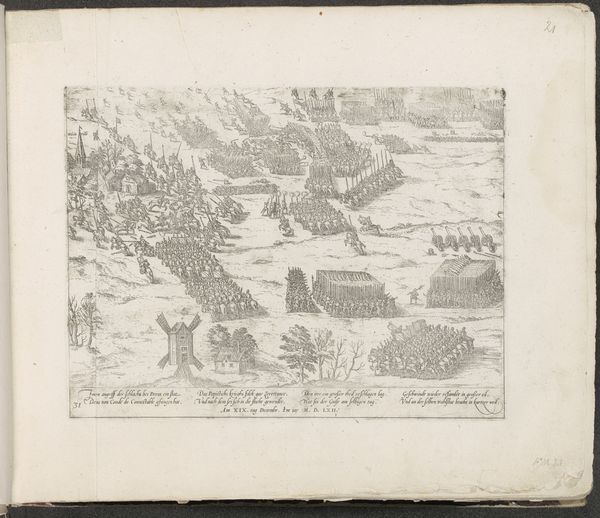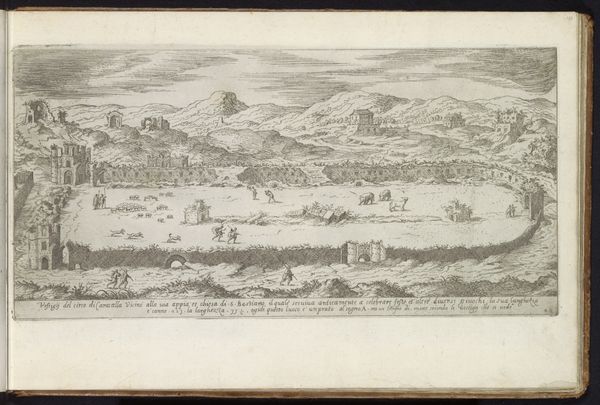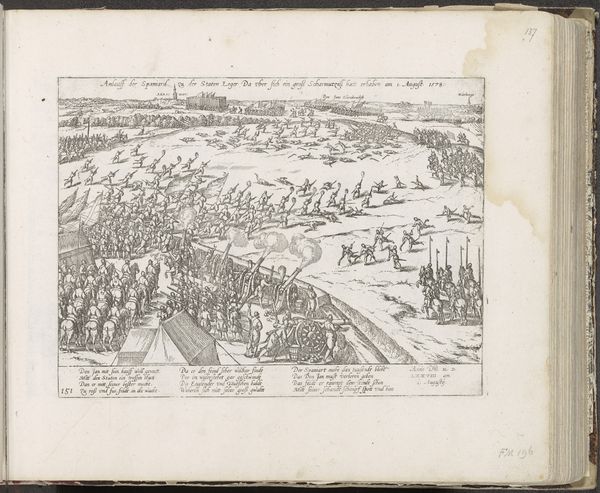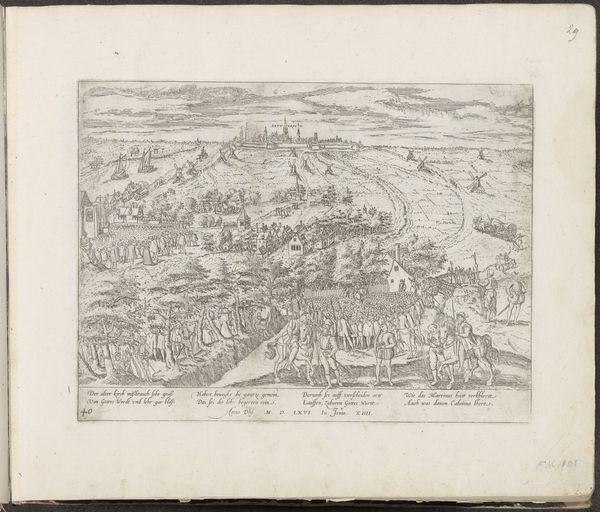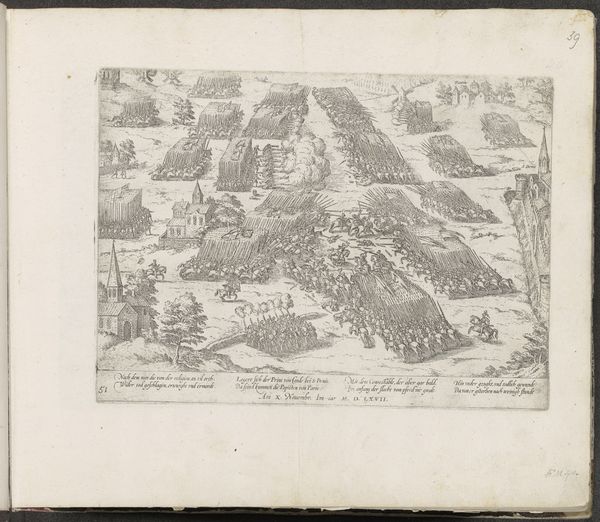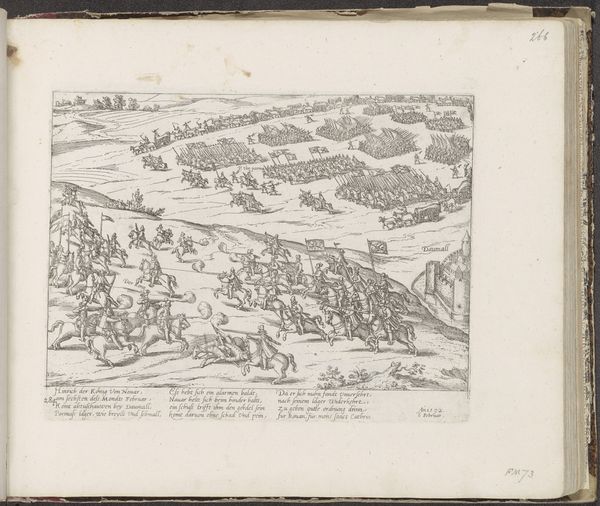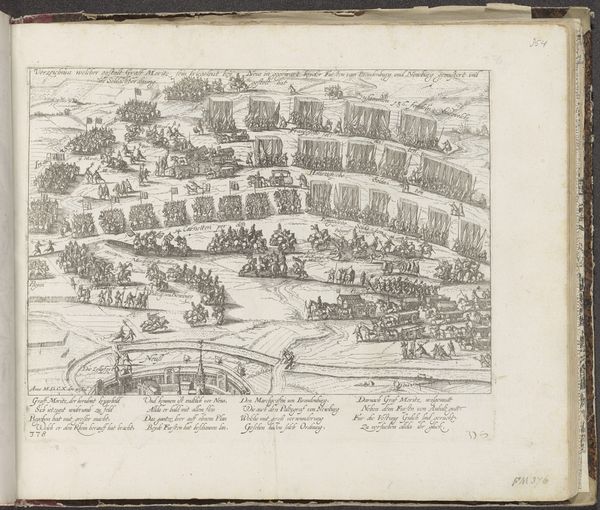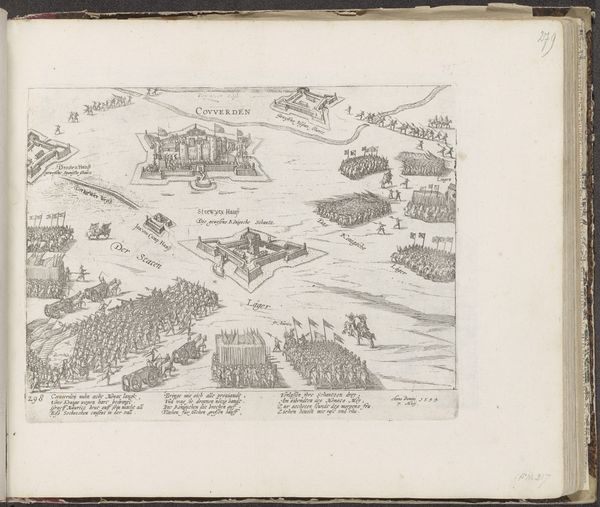
drawing, print, paper, ink, engraving
#
drawing
#
ink paper printed
# print
#
landscape
#
paper
#
ink
#
coloured pencil
#
cityscape
#
history-painting
#
northern-renaissance
#
engraving
Dimensions: height 204 mm, width 264 mm
Copyright: Rijks Museum: Open Domain
Editor: This print, "Kamerijk ontzet door de hertog van Anjou, 1581" by Frans Hogenberg, created sometime between 1581 and 1585, shows a city under siege, and I can't help but notice how orderly it appears, despite the chaos it represents. It's almost like a military strategy game board. What can you tell me about it? Curator: This piece presents us with a highly stylized, almost diagrammatic representation of warfare, a common approach in Northern Renaissance prints. Hogenberg was very interested in illustrating contemporary sociopolitical conflict of his time. Look closely. How does the visual language employed here reinforce existing power dynamics and social hierarchies? Editor: I see that the attacking army is very structured and uniform. It’s a very different image than something like Picasso's *Guernica*, which depicts war in a much more chaotic and emotional way. Curator: Exactly. Consider the historical context: the late 16th century was a period of intense religious and political strife. Prints like these served as both historical records and propaganda tools. Can you imagine how this imagery might function to legitimize specific actions taken during the Dutch Revolt and place the Duke of Anjou into a particular narrative? Editor: So, it’s not just showing the event but trying to shape how people understood it at the time. I hadn't really considered the propaganda aspect so directly, but it makes perfect sense. It is clearly trying to display the Duke’s strategic brilliance. Curator: Precisely! It's vital to dissect how visual representations, even those that appear objective, are often imbued with ideological agendas. Consider the implications this has on how we understand historical events even now. Editor: I’m starting to see that what I initially took to be a somewhat straightforward depiction is loaded with social and political meaning. Thanks for making me rethink how to view such a piece! Curator: My pleasure! Examining these prints provides crucial insights into the complex interplay of art, power, and historical narrative. It challenges us to question whose stories are being told and why.
Comments
No comments
Be the first to comment and join the conversation on the ultimate creative platform.
